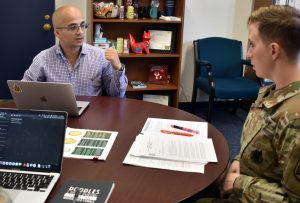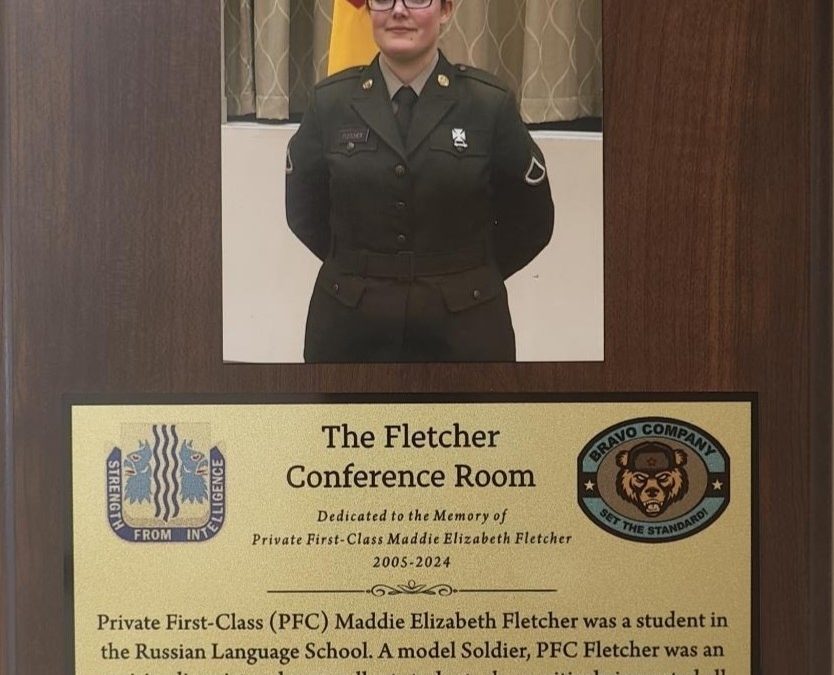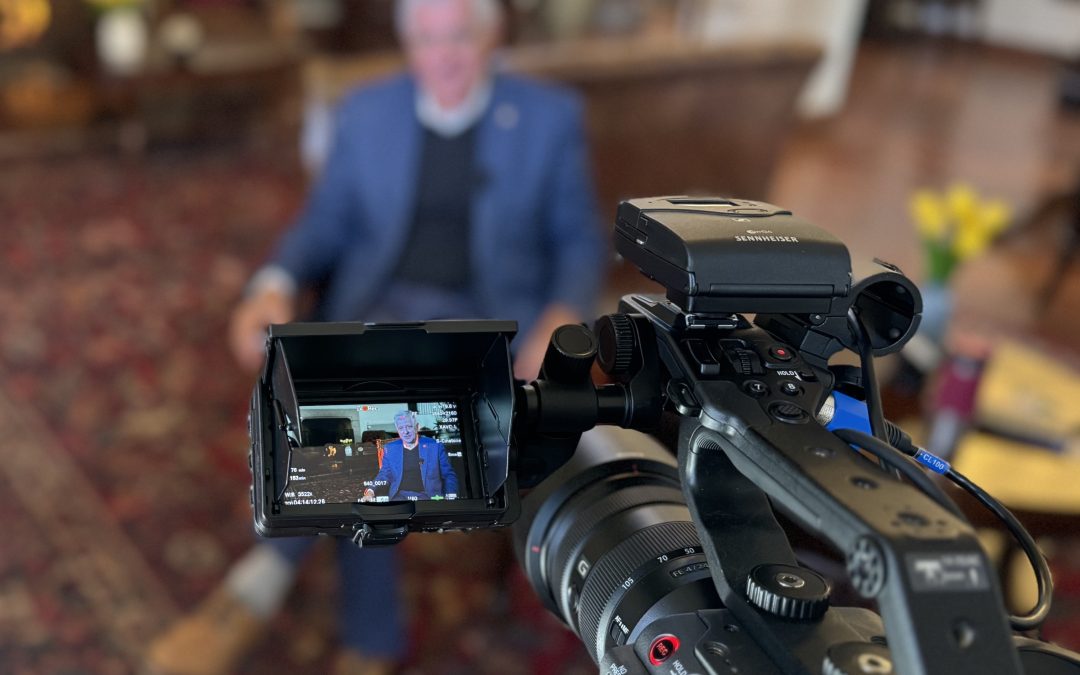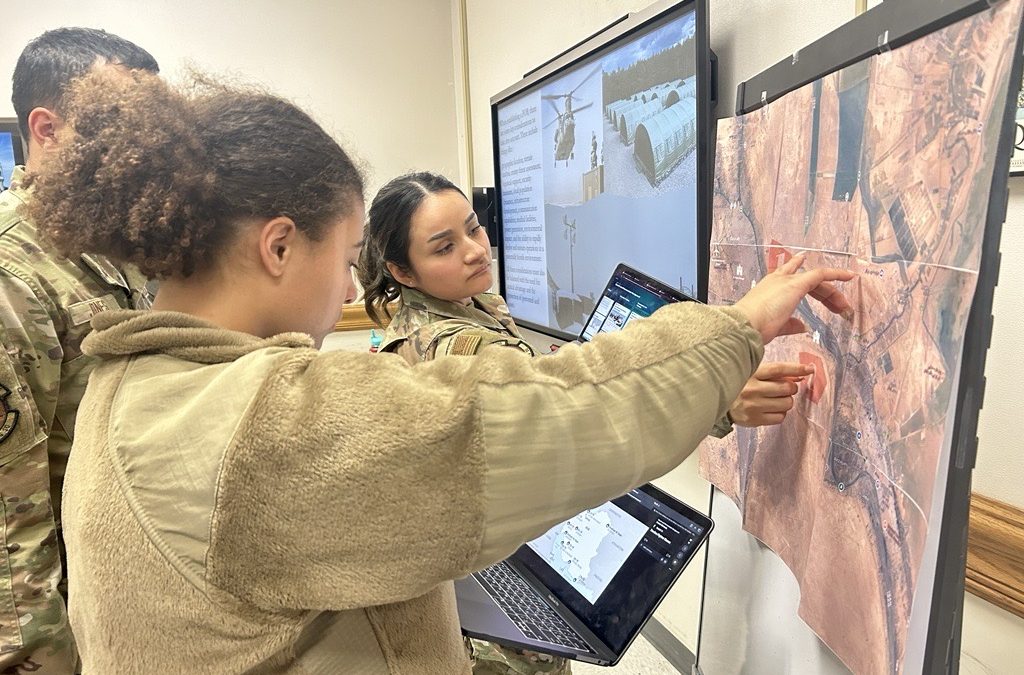To uphold the highest standards in foreign language teaching, all new instructors at the Defense Language Institute Foreign Language Center must undergo two rigorous courses before they set step in the classroom, regardless of their prior experience.
“We call that the DLI-way,” said Dr. Jamil Al Thawahrih, the director of Faculty Development Support. “Regardless of the starting point, new instructors are all trained to meet both the Army and DLIFLC teaching standards.”
Upon arrival, new instructors first attend a two-week Common Faculty Development Instructor Course, mandated by the Army Training and Doctrine Command, after which they immediately continue their training with a three-week DLIFLC Instructor Certification Course.

Dr. Jamil Al Thawahrih speaks with DLIFLC military leadership about future faculty development programs. Al Thawahrih’s first degree from Jordan was in computer engineering. When he moved to the U.S. he decided to pursue a master’s degree in world languages, followed by an Ed.D., a professional doctorate in education.
“In the beginning, it can be overwhelming, but instructors understand that they have to be the best to teach the best students the military has to offer,” said Al Thawahrih.
Teaching at DLIFLC requires a deep understanding of teaching methodology, especially because the Institute instructs a specific foreign language, five days a week, six to seven hours a day, with special assistance, homework correction, grading and classroom preparation, all wrapped into their eight-hour day.
“The CFD-IC is a competency-based course aligned with internationally recognized instructor competencies published by the International Board of Standards for Training, Performance, and Instruction. It introduces faculty to their role and responsibilities as DLIFLC instructors and federal employees,” explained Al Thawahrih, adding that the course covers classroom instruction in a broad sense, while the DLI-instructed ICC course is very specific.
“The ICC program is a local course, offering more flexibility with content. Our focus in this course is how to teach language and tailor instruction to the DLIFLC student,” he said.
The goal is to teach instructors a variety of classroom techniques, including student-centered, project-based, and tasked-based instruction, and how to teach reading and listening efficiently. Teachers learn classroom management strategies, lesson planning, and various methods like creating a flipped classroom and how to offer students more autonomy in their learning.
“I enjoyed the ICC course because it was more focused on what we are doing now [in the classroom]. We had an opportunity to apply what we learned in four demo classroom hours where we used the target language,” said Xinran Wang, who started teaching Chinese Mandarin at DLIFLC in 2022 and holds a PhD. in curriculum and instructional design.
The FDS division also provides in-service certification courses, such as the Instructor Recertification Course, designed for those who have completed five years of teaching in the classroom in the Basic Course. FDS offers certification courses for the Post Basic Course instructors as well.
“In the Post Basic Instructor Certification Program, we had several [participating] teachers from different locations like Germany and the Russian program. It was important for me to hear from them about their best practices,” said Augar Khoshaba, who holds a master’s degree in teaching English as a foreign language from the Middlebury Institute of International Studies in Monterey and was a Fulbright scholar in upstate New York before coming to teach at DLIFLC.
In response to certain programs offered through Continuing Education, where instructors reside at one of the satellite locations, FDS has designed an Online Certification Course to ensure that teachers who teach online are equipped with the tools needed for success and efficiency.
“We need instructors to keep up with the changing needs of the Institute regardless of where they live and work,” said Al Thawahrih.
Currently, FDS offers certification courses and a wide range of short workshops to faculty on the Presidio. With the adoption of the Canvas learning management system at DLIFLC in 2022, future plans include moving all certification courses to this system to allows new instructors time to experience the platform before they start teaching.
“We want all of our new faculty to take these courses, no matter where they are located. Only this way can we provide the consistency in training needed to maintain the high teaching standards our faculty possess,” said Al Thawahrih.





